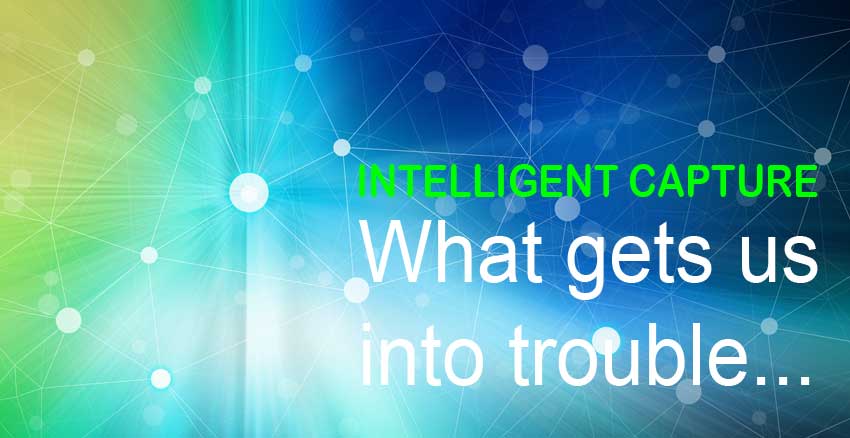With Intelligent Capture, what gets us into trouble… “It is not what we don’t know. It’s what we know for sure that just ain’t so.”
Whether you attribute this quote to Mark Twain, Josh Billings or one of several others, the statement stands out as true in a wide range of topics and situations. Most recently, it applies to the Intelligent Capture (or Intelligent Document Processing) market where a number of new entrants from a variety of solution areas extol the virtues of their shiny new intelligent capture capabilities as though they are anything but the circa 2000’s technology that they really are.
Where Is the Machine Learning?
Many claim the ability to learn when in fact, they are not based upon advanced machine learning algorithms, but based on older rules-focused knowledge base concepts.
The reality is that, just like the decades old legacy intelligent capture software still out there, these vendors cannot deliver much more than a modest level of automation and certainly not high levels of unattended automation.
Intelligent Capture is more than just OCR.
While we can certainly hope that these new solutions will mature into something more capable that can deliver precise, highly automated data, there is a hidden problem. This is due to the fact that they are approaching intelligent capture—for all of the man-decades of research and development—as merely an “OCR problem” rather than a data science problem.
OCR Problem vs Data Science Problem
Instead of researching and learning from vendors that have been around for decades (and who know where all their skeletons are buried), these capabilities are built upon presumptions based on cursory examinations of the industry about what it takes to develop high precision software. The result: the thing they know for sure which just ain’t so is that that it starts and ends with simple OCR and a library of techniques.
What Is Missing?
Missing are the range of capabilities to manage image quality problems except for the most simple. Missing are the capabilities to precisely describe documents, pages, and their data except for the most simplistic zones and keyword-value pair techniques. Missing are the abilities to automatically validate data so that data that is correct needs no manual review.
Delivering on Customer Expectations
What they gain by taking a simplistic approach, they lose with the inability to deliver anything close to what customers really expect, which is the ability to obtain high-quality structured data from their document-based information; and to deliver this without reviewing everything.
Certainly, it is a positive to take the task of data entry from completely manual activities to one where the focus is on review and correction of output. However, that is like a self-driving car that asks its passenger to review every single action it wishes to take. That is not the promise of modern and real machine learning-based software.
###
If you found this article interesting, you may find this Data Science Advanced Capture eBook useful. It examines how to attain unattended document automation with high accuracy leveraging data science. Expectations for today’s digital workforce automation are centered around higher speed and efficiency. As an enabling component for complex document-oriented robotic processes, intelligent capture must process as much document-based data as possible in a 100% unattended automation state. The return on investment lives or dies on this ability.


